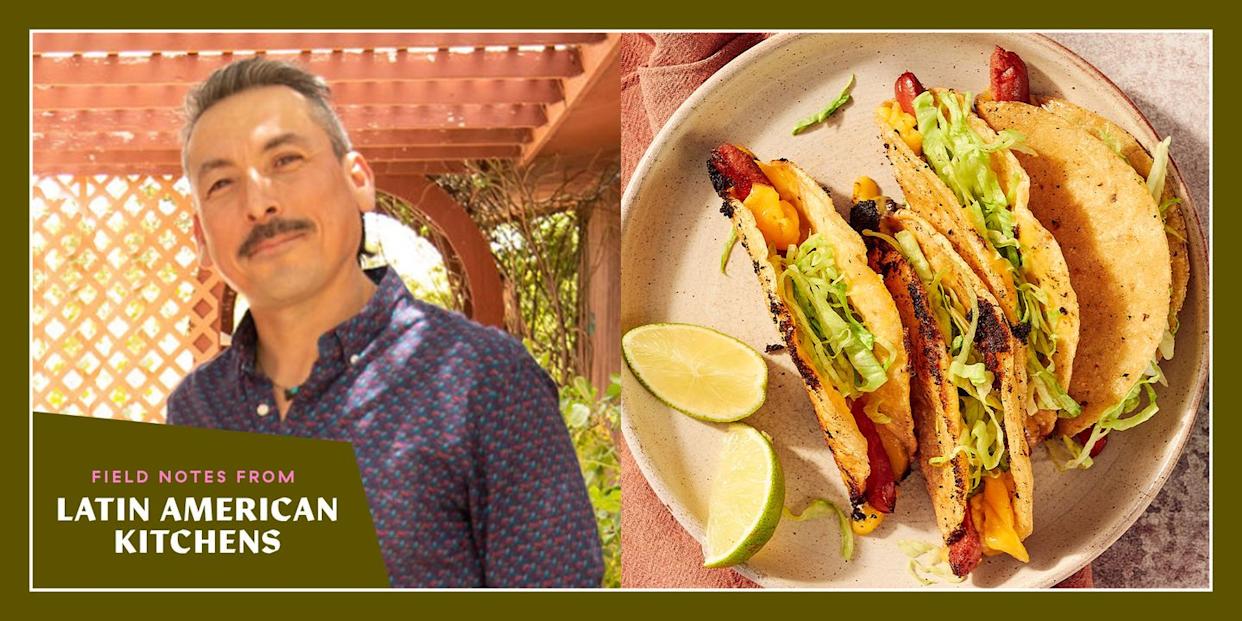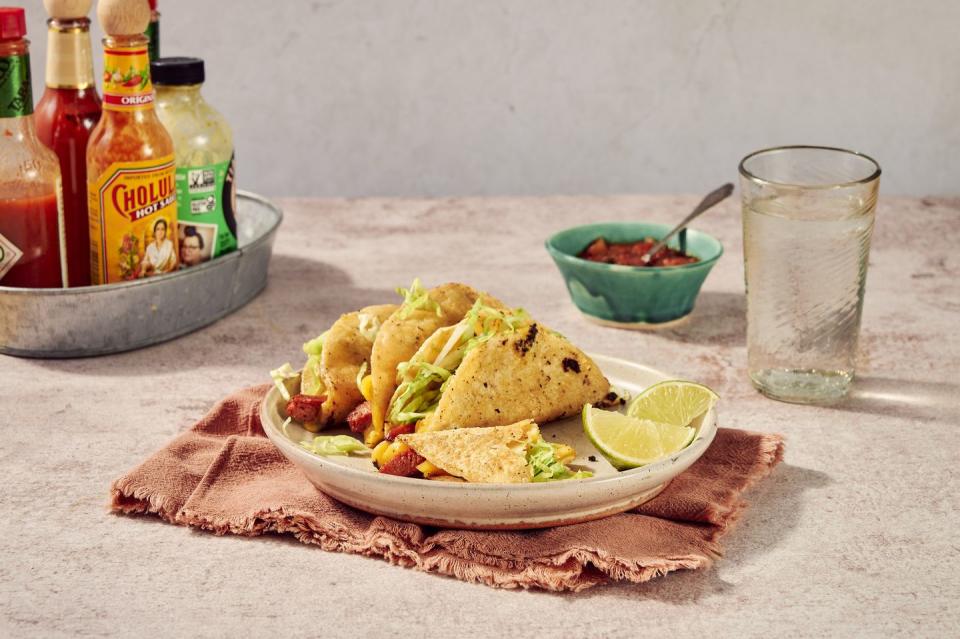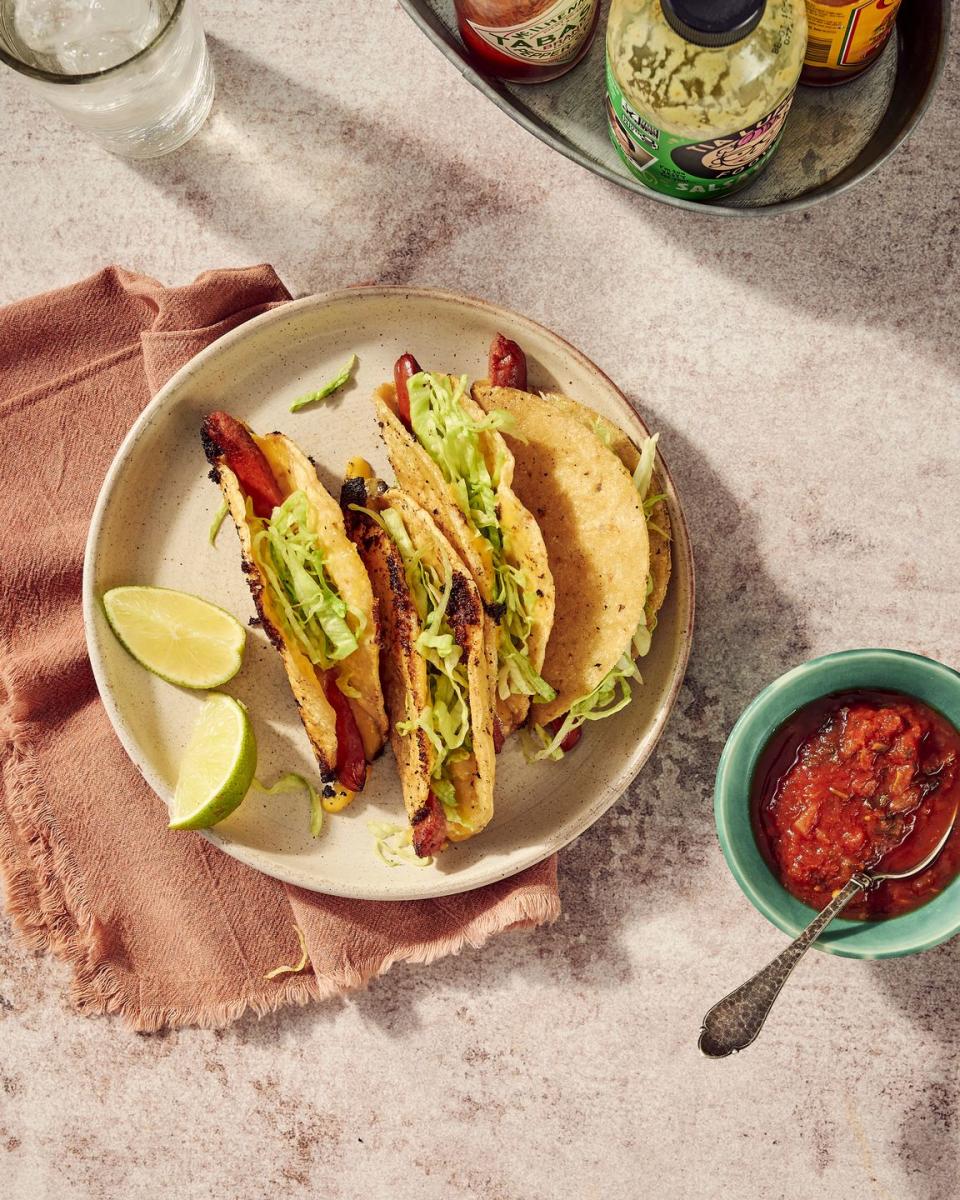Hot Dog Tacos Are Seriously Underrated

I’m a Mexican American professor who teaches classes about Mexican food. This would make me a taco “expert” in some sense. Even though I have a PhD, when it came to writing this story I wanted to turn to my mother, Anna Alvarez, the person who taught me everything I know about tacos. Like any good son, I would defer to mi jefa (my boss) on this subject, but mostly because I wanted to get to know Anna more, in the ways I get to know the Mexicanos I interview for my research projects. Little did I expect that Anna would throw me for a loop and suggest I cover a borderlands taco I had never heard of before, the taco de Soto.

The taco de Soto is a fried, crispy taco filled with sliced hot dog and cheese. What on the surface seems humble enough, this taco has a cultural significance that is deeply personal for some; for others, it’s a snack with memories attached. And for those who love learning about tacos, like me, it’s an opportunity to understand people better.
My research into taco literacy explores foodways as expressions of Mexican people first and foremost, passed on from generation to generation. A hot dog taco in this case, is not just that, but an expression of the genius of borderlands people, en confianza. Confianza translates literally to confidence, but it means more. Confianza is trust between people—trust conceived of as care, with the confidence you feel when you can truly trust someone. The literacies are the learning with others through language and care, and, hopefully, the joys of knowing one’s roots in context.
Understanding tacos requires knowing some brief history. Tacos are antojitos, appetizer snacks, sometimes referred to as entradas or botanas in different Latin American contexts. These snacks are small bites you eat before a proper meal, and they can also become meals of their own. Antojitos can range from pupusas, to arepas rellenas, capaches, empanadas, and so on. In Mexico, the antojito pantheon has regional characteristics, and this is also true with the modern taco as we know it.

Tacos followed silver miners from Pachuca to Mexico City in the late 19th century, then later to all parts of Mexico with the expansion of the railroads and increased migration internally and abroad into the 20th century. As more Mexicans migrated to the United States, they brought with them their unique antojitos, like tacos. Using local ingredients, they adapted into new variations that weren’t more or less authentic, just different.
In this way, what we understand as the “crispy taco,” one version of an American taco, with U.S. additions of cheddar cheese, iceberg lettuce, and tomato, is what becomes of the Mexican taco dorado as it is transferred to the palate of a new land. As such, the taco de Soto, from just south of the Arizona border in Sonora, is unique and classic in its resonance for borderlands folks like mi jefa.
When I asked Anna about the tacos of her childhood, I focused on the days before she migrated to the U.S. as a little girl. My grandfather, Gilberto, was a bracero in the 1950s, and he and my abuelita, Rosaura, along with their three children, arrived in Bisbee, Arizona, from Cananea, Mexico, some 50 miles away.
“My mom used to make tacos de Soto a lot,” Anna told me. “Weenies with queso in corn tortillas: so simple, but so good. All the time. They were the first tacos I learned how to make. My mom would make them, and my grandma would make them. Those are Cananea tacos, nowhere else.”
Never heard of tacos de Soto? Neither had I—and I have a PhD in tacos.
Yes, tacos de Soto are hot dog and cheese tacos, a fusion food. In the same way we can recognize the Sonoran hot dog—a frank wrapped in bacon, covered in pinto beans, mayo, mustard, and jalapeño salsa in a bolillo—we can also imagine a Sonoran-style hot dog taco. According to the legend, a taxi driver named Francisco Soto, a regular at La Cabaña del Tío Tom, a restaurant in Cananea, arrived one day for his regular torta de salchicha con queso, but there was no bread. Hence, a new taco arrived on the menu: a hot dog with cheese taco named the Taco de Soto after Francisco. These tacos are now known regionally as Sonoran, and are distinctly norteño.
“They used to make them at La Cabana. We lived on top of a hill, and we would come down the alley, and there it was,” Anna told me. “We would eat there as a family a lot. We would drink bottles of Coke and eat tacos de Soto, and after we would go to watch a movie at the theater across the street. Those tacos remind me of then, back then, before life got harder for us in Bisbee.”
These were the tacos mi jefa remembered as a little girl, the ones close to her heart, en confianza. When her family migrated to Arizona, however, she would only ever have tacos de Soto at home, and never saw them on any menus. “We didn’t have them in Bisbee. I guess it didn’t make sense for people to think about having hot dogs inside a tortilla.”
Growing up in Safford, Arizona, a few hours north of Bisbee, we never had tacos de Soto either. I grew up on tacos dorados made with hamburger meat and store-bought corn tortillas, deep fried in vegetable oil. Those are the tacos of my roots, and later, the ones I shared with my family at Taco Bell, before going to watch a movie at the theater. Not any less authentic than tacos de Soto, just different, with a different context, a different camino. We can walk these different caminos, appreciating the cultural significance of Mexican-U.S. borderlands foodways. Through borderlands tacos, we make caminos together where we learn from one another about migration in ways that are welcoming, significant, and human. And about how foods from home make us feel both nostalgic and welcome. And that we matter.

You Might Also Like

